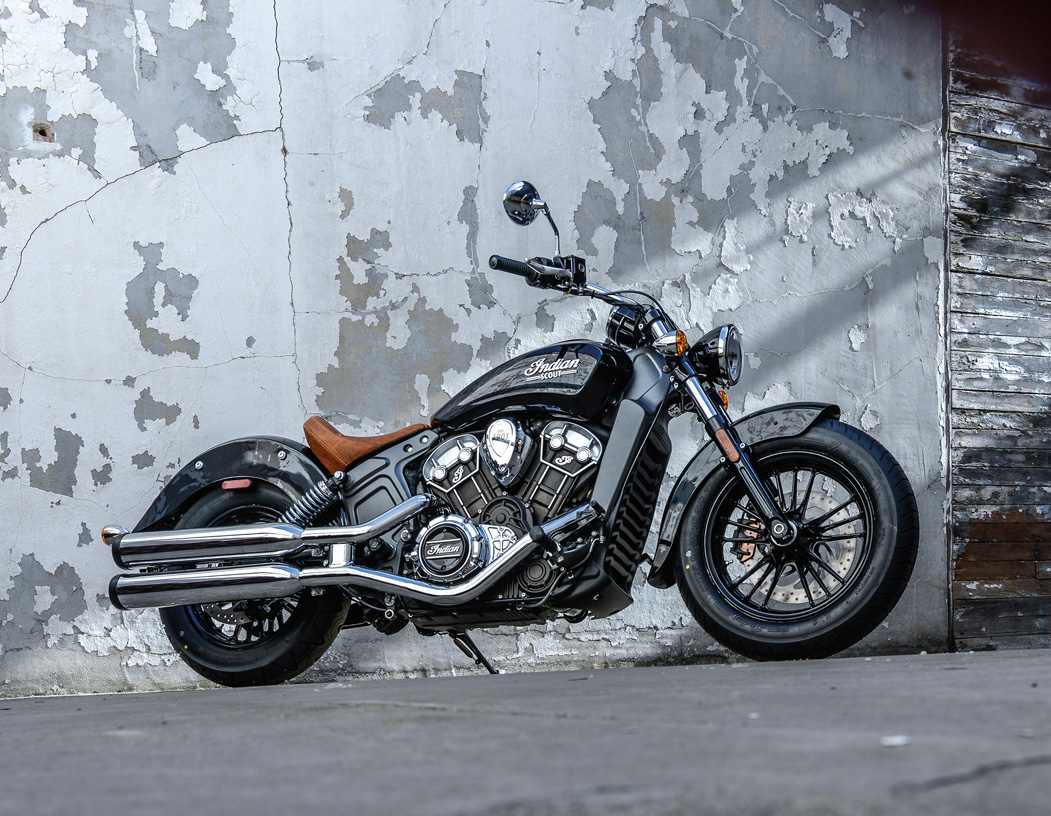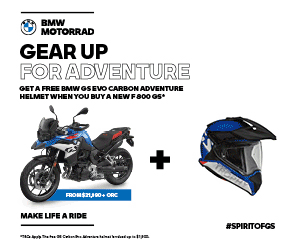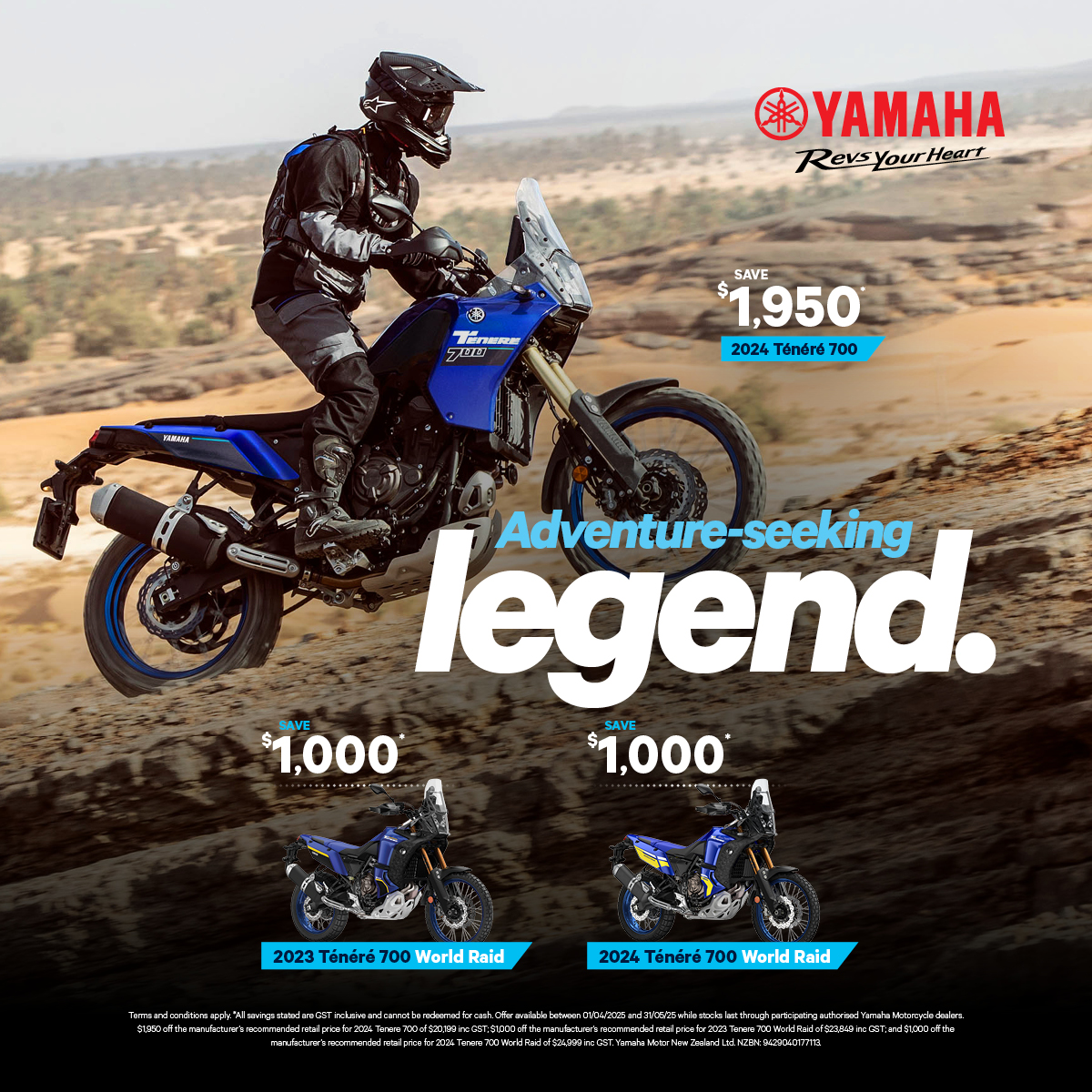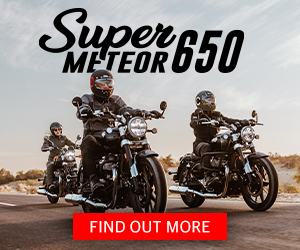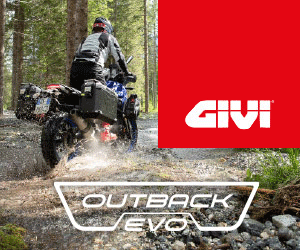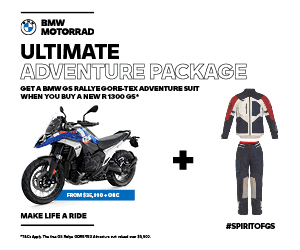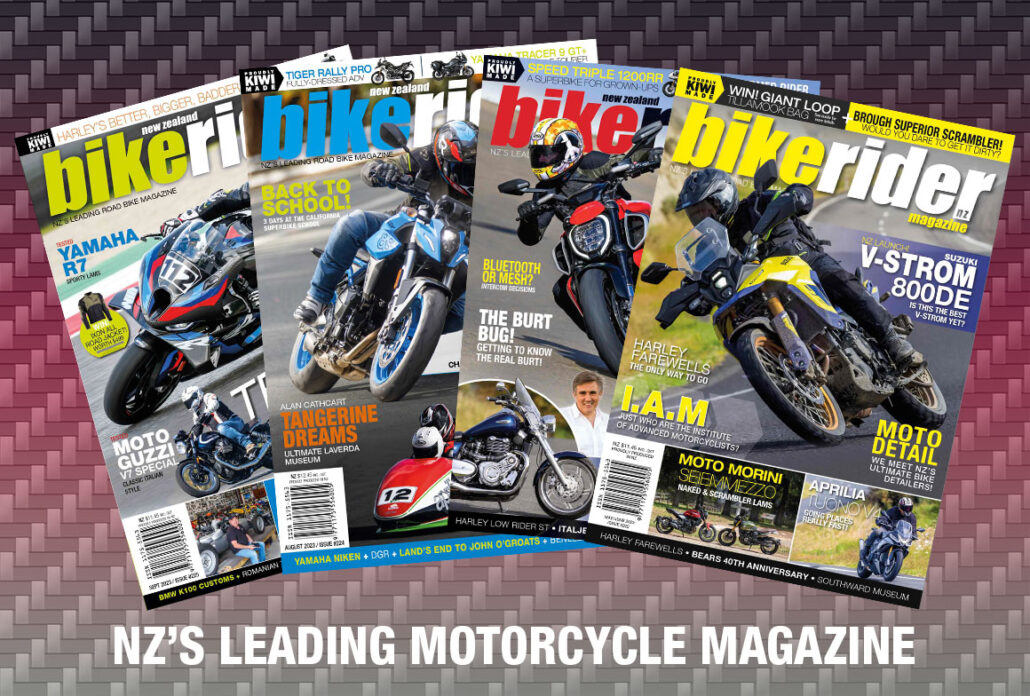Lean and mean
Hot on the heels of the International launch, BRM’s Eurodude, Roland Brown spent the flight home tapping out his impressions of the advanced scouting party from Polaris.
Words: Roland Brown | Photos: David Goldman, Horst Roesler and Greg Jongerlynck
The Indian name and curly script on the tank are familiar, and at a gentle pace the wide-handlebarred naked bike has the feel of a typical laid-back American V-twin. But a glance at the Scout had shown that this bike is very different to the Chief models with which the famous old marque made its dramatic comeback a year ago.
And a twist of the throttle on the highway outside Sturgis confirms the impression. The Scout’s 1133cc DOHC, eight-valve engine gets to 5000rpm and keeps on going, the bike accelerating with more urgency. The wind tugs at my shoulders and there’s a touch of vibration through the seat and footrests as the speedometer needle passes 150km/h and keeps on moving, and the small digital rev-counter flickers towards 8000rpm before I notch up through the six-speed gearbox.
It would be an exaggeration to describe the Scout as sporty, but this debut model of Indian’s new family is significantly revvier, lighter and more lively than the big, softly tuned Chiefs. The Scout is the new entry-level model of the range, designed to appeal to younger, less experienced riders, and it’s also the firm’s fastest and most powerful machine yet.
And this bike is not just built for Americans. Indian took the European market seriously enough to bring a Scout prototype and several rivals to focus groups in Germany, Italy and France, and to conduct online surveys in other markets including Britain and Scandinavia. “The age demographic is younger than for the Chief but not young,” says Gary Gray, Indian’s Product Director. “The average target age is 44 with a range from 20s to 60s.”
The Scout might be an entry-level model but it’s not a budget bike like Harley’s Street 750. The Indian blends traditional styling cues with some innovative design features. Its cast aluminium frame and diagonal twin shocks combine to mimic the old model’s hard-tail chassis. The look is simpler and less traditional than the Chief’s, with no huge front fender or Indian’s-head badge.
But there are some neat and traditional touches, for example in the Indian’s head shape of the ignition key, which fits into a lock on the left of the engine. On the opposite side, the number 1901 on the chromed injection cover is a reminder that Indian was founded two years before rival Harley.
New Mill
The powerplant is very different to the Chief’s 1811cc, air-cooled, pushrod-operated unit. It’s a V-twin, of course, but a liquid-cooled unit with eight valves, chain-driven twin overhead cams, and cylinders spaced at a wider, 60degree angle. Maximum output is 100bhp at 8000rpm, with a broad spread of torque that peaks at 5900rpm. Indian say the capacity was chosen because that’s what was required to generate the required power and torque figures, rather than because they targeted a particular capacity class.
Although the engine doesn’t require cooling fins it’s not short of visual interest. The aim of Rich Christoph, who led the design team, was to use the engine’s surfaces to highlight the parts beneath. “With the clutch, the crank centre, the counter-balance shaft and the oil pump, we took the engineering information under the surface and brought it to the covers,” he says.
“This bike wasn’t designed to be dressed up and frilly. It’s honest, approachable and balanced. It was designed to strike an emotional connection with the rider even before you begin to interact with it.” And to my eye the blend of simple shapes and retro details makes for a very attractive machine.
That remains true from the leather single saddle, which is low-slung (just 673mm) and gives a view of a wide, slightly raised one-piece handlebar and a single, round, chrome-rimmed speedo with a small digital rev-counter set into its face. The riding position is very much cruiser, with feet set quite well forward. The Scout felt notably light as I lifted it off the sidestand, due more to its low centre of gravity than to its substantial fuelled-up weight of 255kg.
A Nice Blend
The ride-by-wire motor’s power delivery is deliberately soft and rider friendly, which made for effortless cruising on the launch in South Dakota. When I prodded into gear and let out the smooth-acting and reasonably light-action clutch, the Scout burbled forward with an engaging V-twin feel, a fairly restrained exhaust note and a force that was just on the interesting side of gentle. This motor can’t match the Chief’s low-rev grunt but it’s impressively flexible, pulling cleanly from 2000rpm in top, picking up nicely by 3000rpm, and cruising lazily at 130km/h and 4000rpm. The six-speed box shifted reliably, putting down the power via a belt final drive.
And there’s definitely some straight-line performance to be had, if you want to look for it. The mild vibration that started coming through the seat and footrests above 5000rpm meant that I generally preferred to short-shift and keep revs between about three and four grand. But the Indian was happy to keep revving, and accelerating. On one straight it accelerated past 190km/h pretty quickly, with a bit more to come.
Similarly the chassis didn’t object too much to being hurried, but worked best at a more gentle pace. Steering was very light and neutral, with little effort required to corner despite the lazy 29-degree fork angle. Ride quality was reasonable on fairly smooth roads, although suspension travel is limited (just 76mm at the rear) so bigger bumps were felt through the seat.
There are many twisty roads near Sturgis and the Scout cornered well enough to make them fun, although its suspension moved around a bit in bumpier bends. The footrests touched down before the 16-inch, Indian-badged Taiwanese tyres ran out of grip, but at least that gave useful warning before solid bits scraped. Braking is fairly basic, with a single 298mm disc and twin-pot caliper up front, but I found the system adequately powerful. The Scout will come with ABS in most markets (as in NZ) but the test bikes did without.
Practicality should be reasonable for a cruiser, though the fuel tank holds 12.5 litres so isn’t as big as it looks — probably good for about 200km — and there’s a low-fuel light but no gauge. The only slight problem I had was that a couple of times I almost tipped over at a standstill after getting my left boot caught on the raised end of the footrest rubber. But that would be easily cured (by trimming the rubber), and nobody else mentioned a similar incident. At 1.93m I’m taller than the recommended maximum for the stock set-up so would have been better suited to the tall rider’s accessory saddle, which gives extra legroom.
Buyers can choose from a host of other extras, including a detachable screen, leather panniers and the pillion seat that is not included in the price. (Most US owners will ride solo, Indian insist.) That’s not cheap but what comes as standard is outstanding detailing and build quality, in a choice of four colours. It adds up to an enjoyable, charismatic cruiser that confirms reborn Indian is here to stay.

